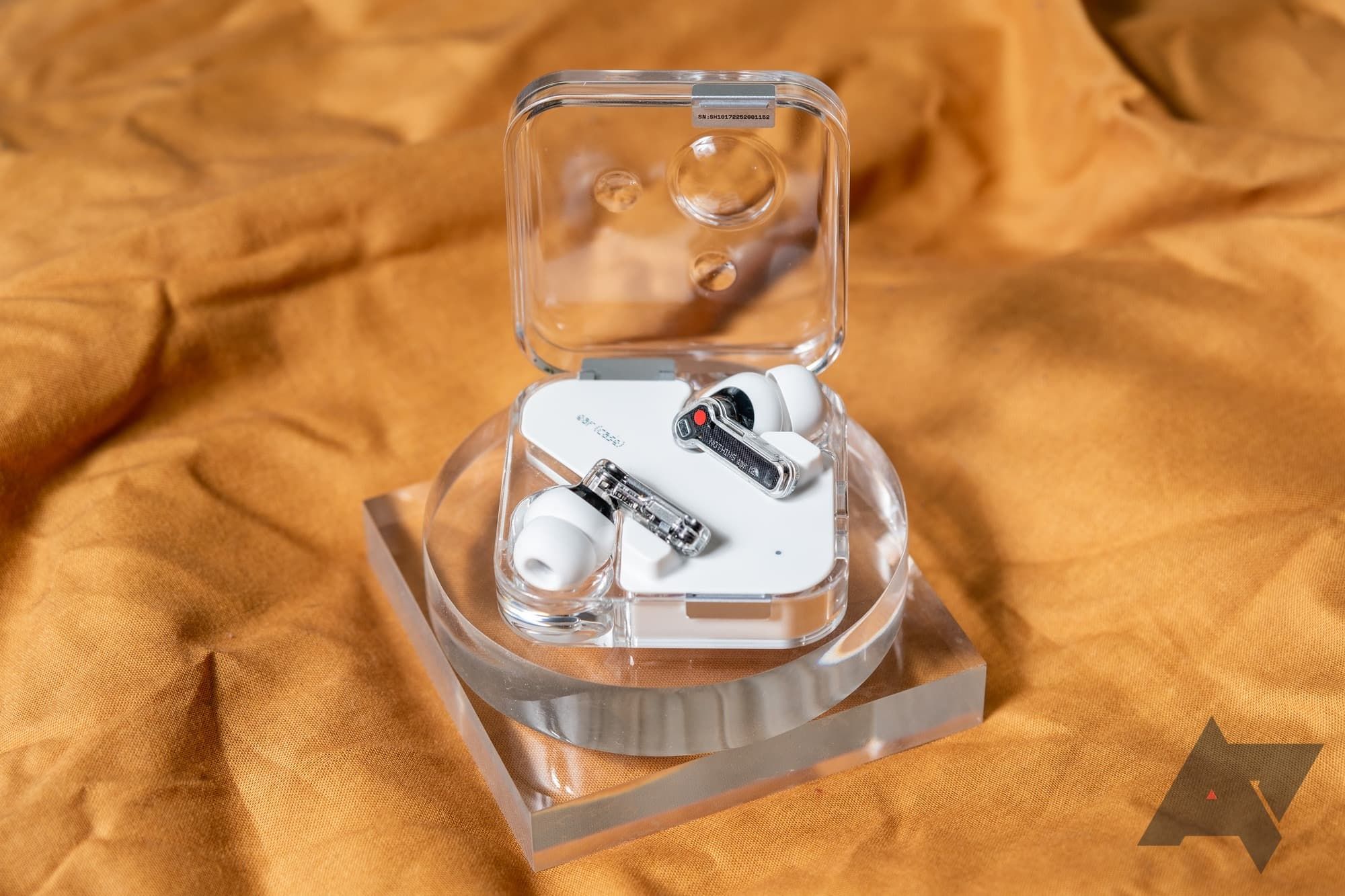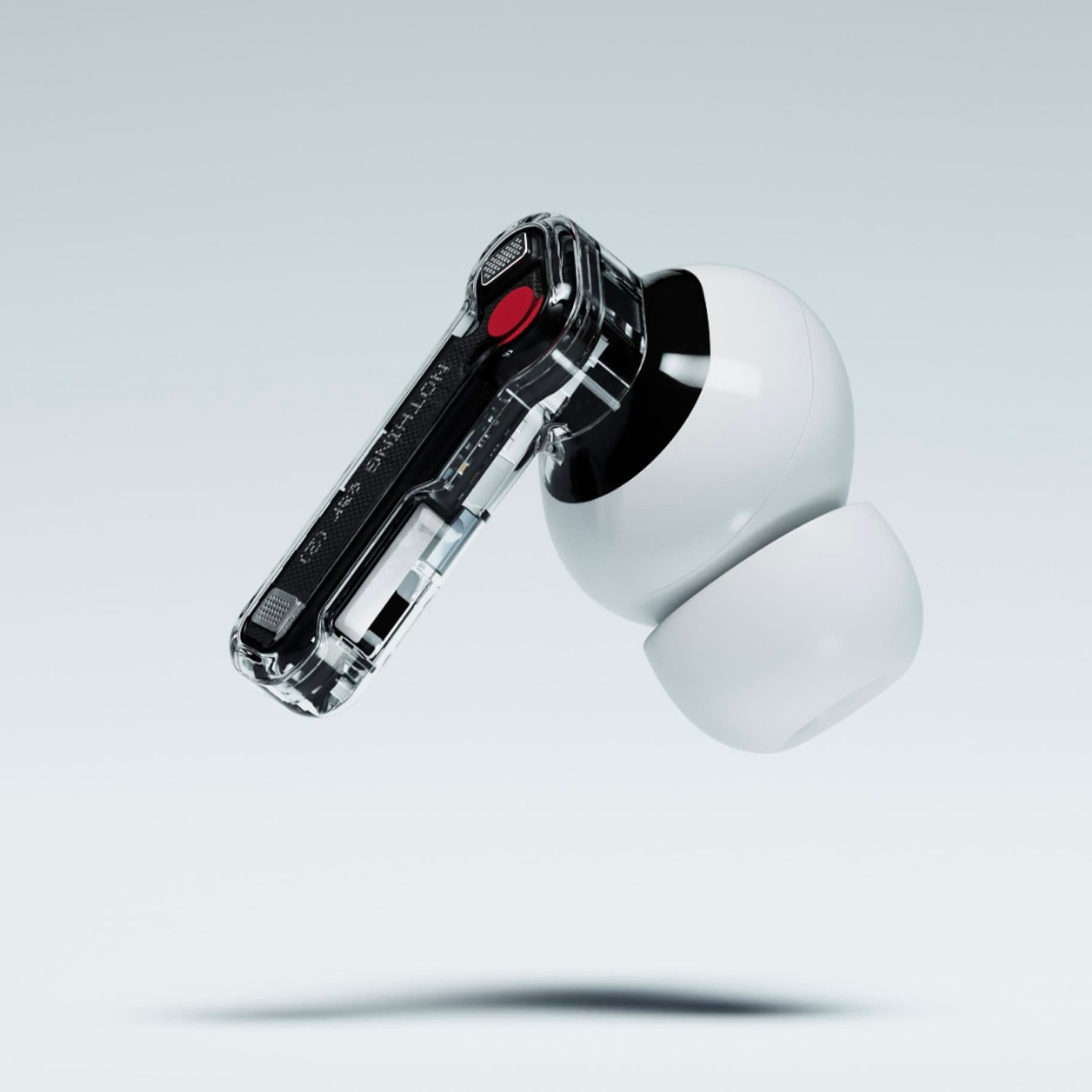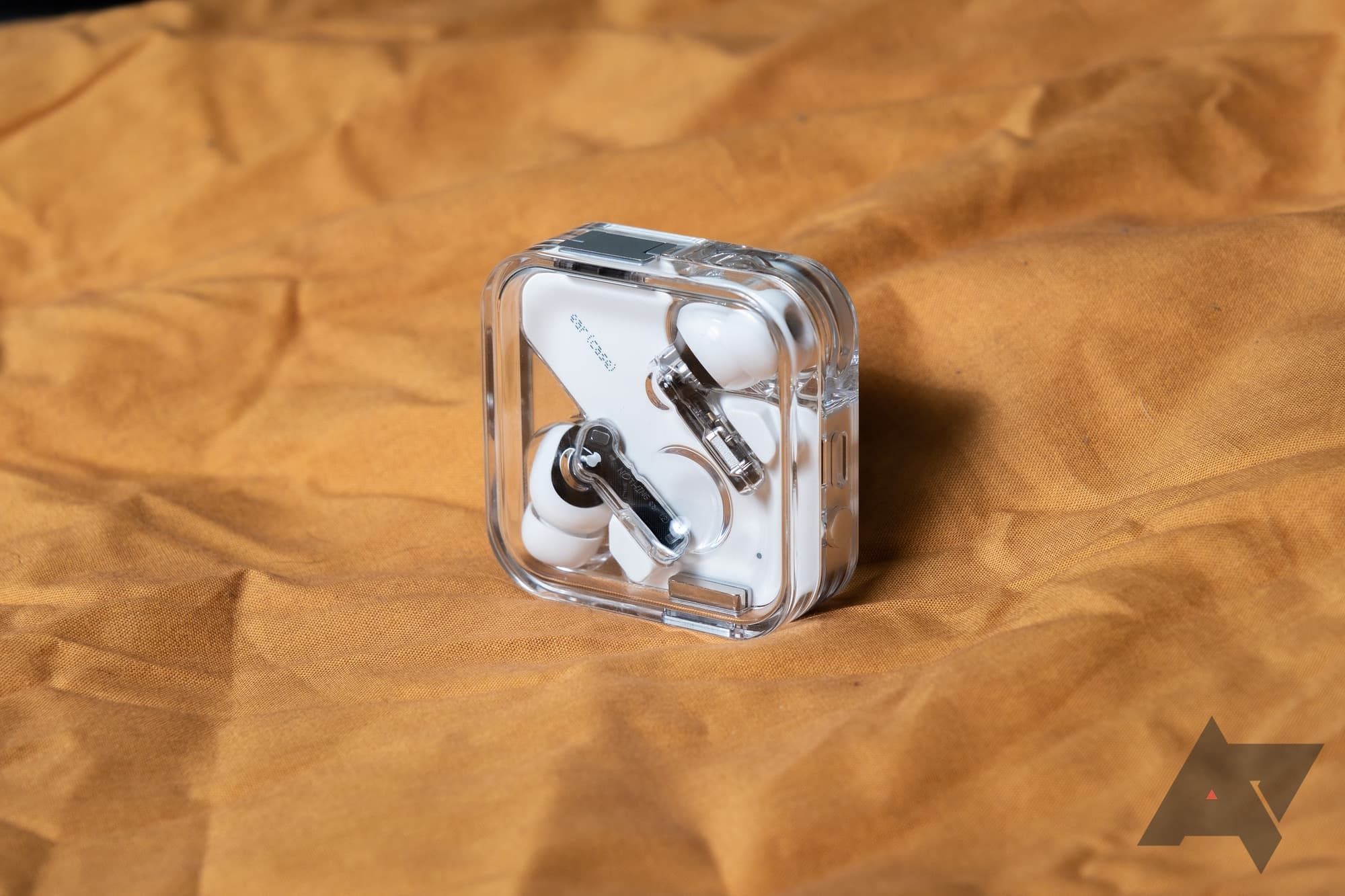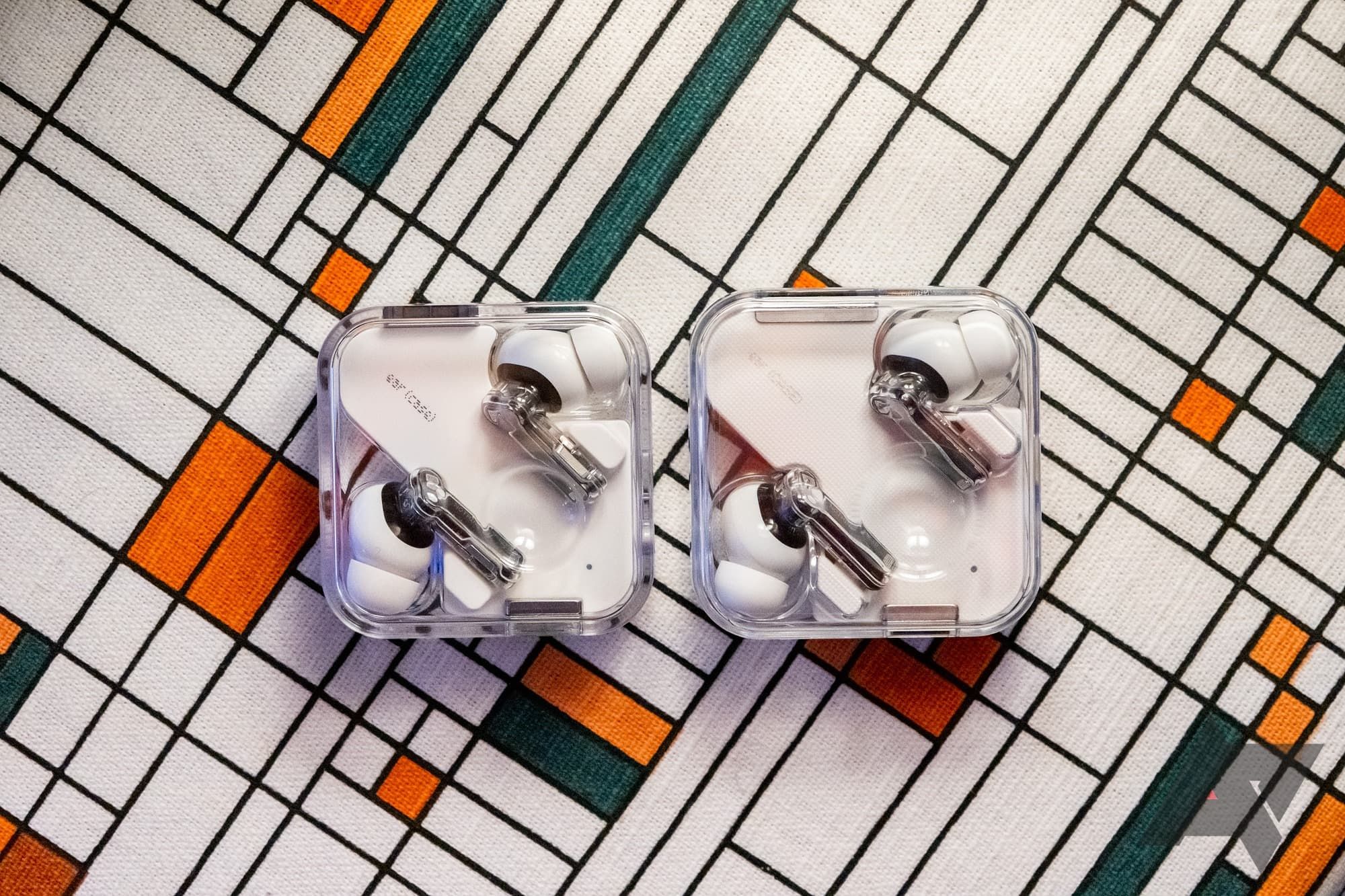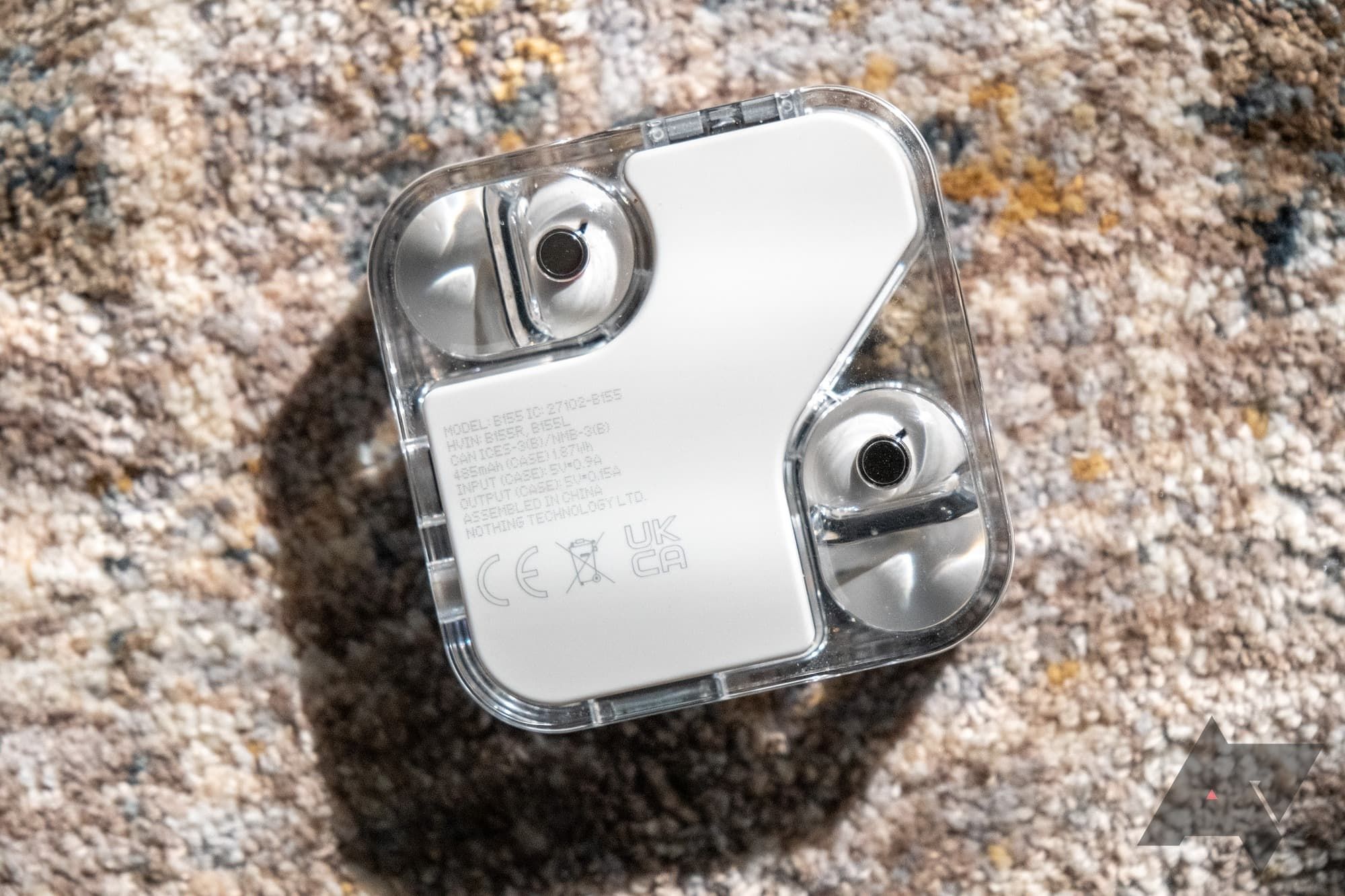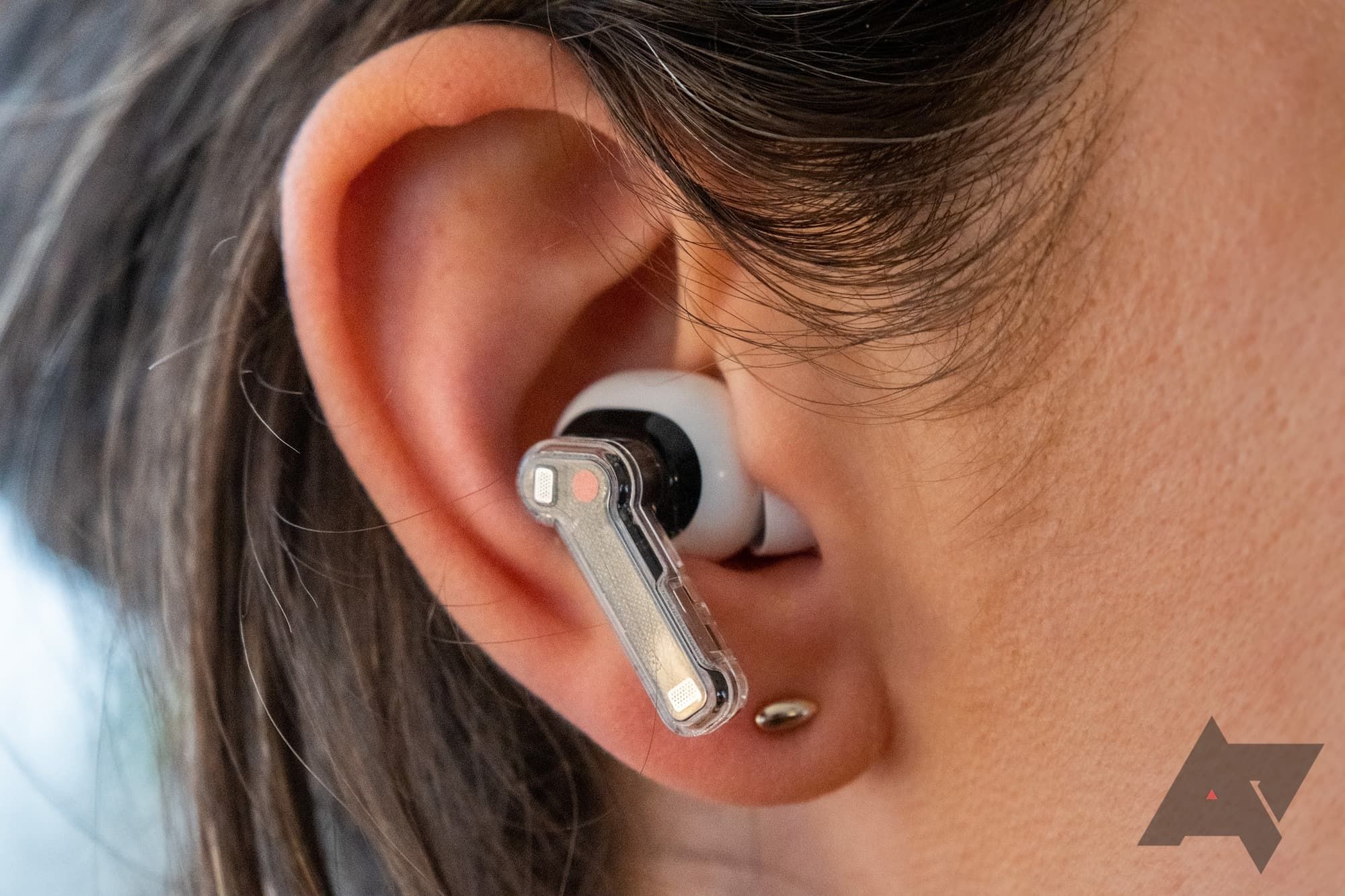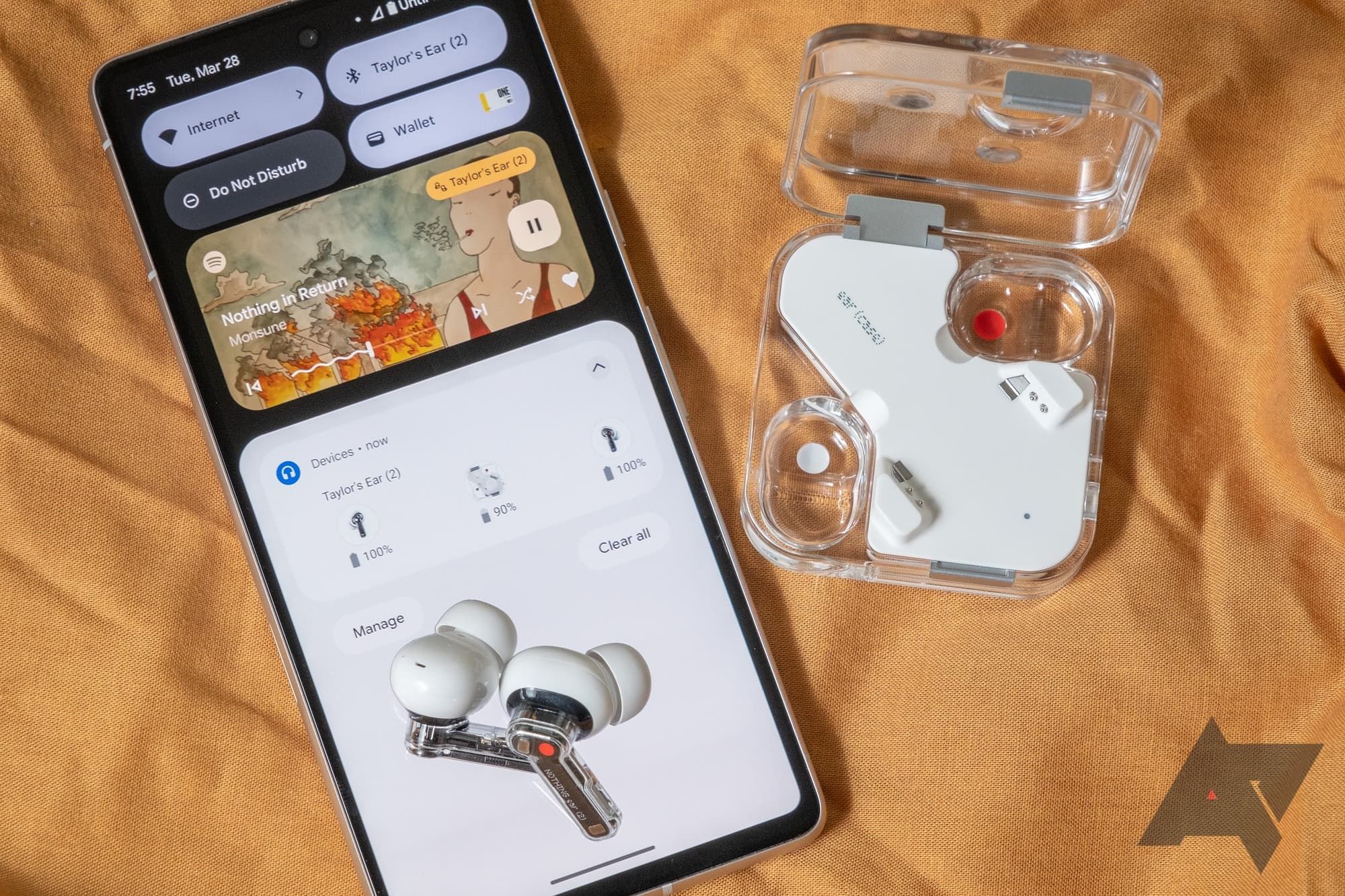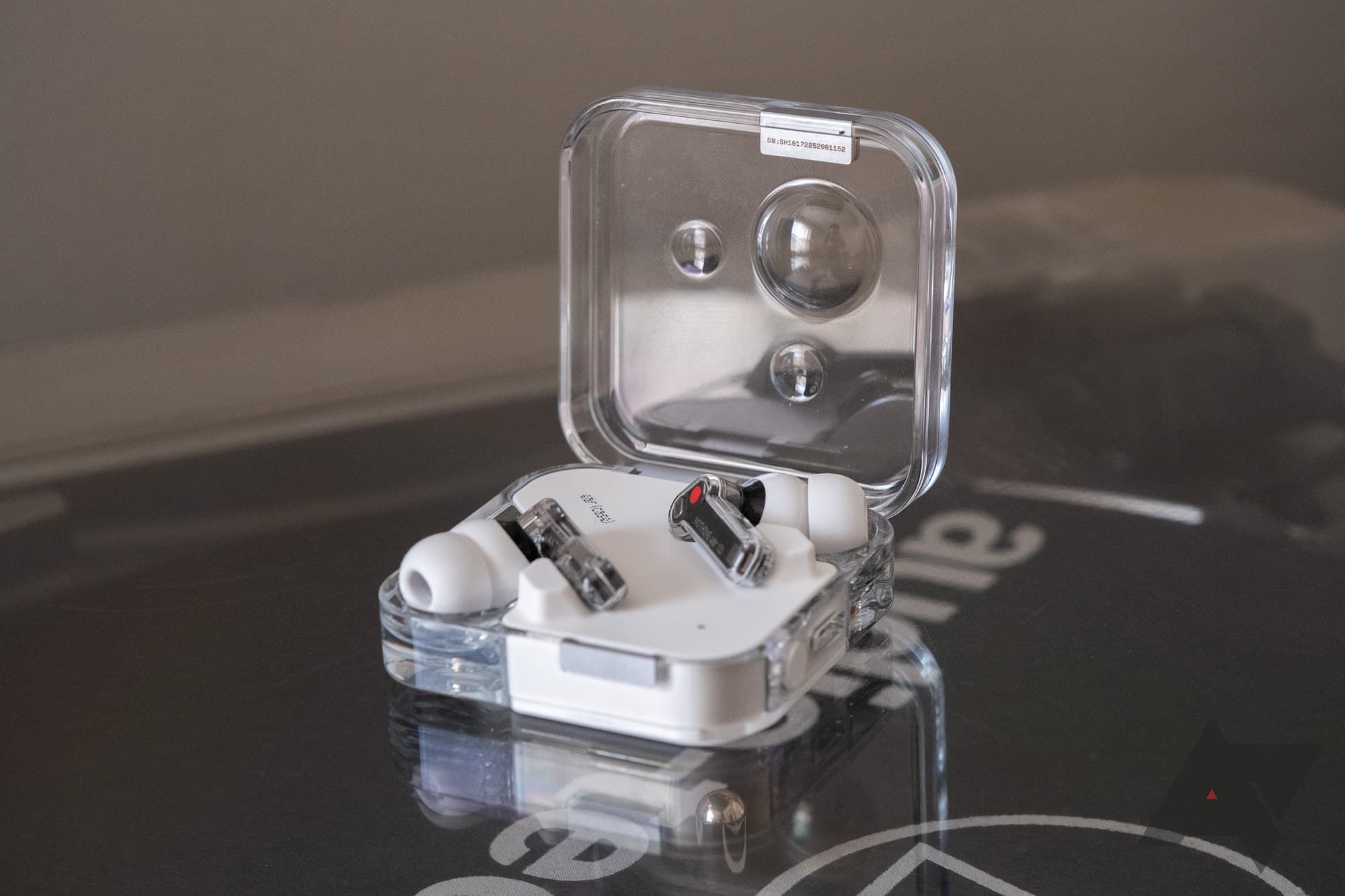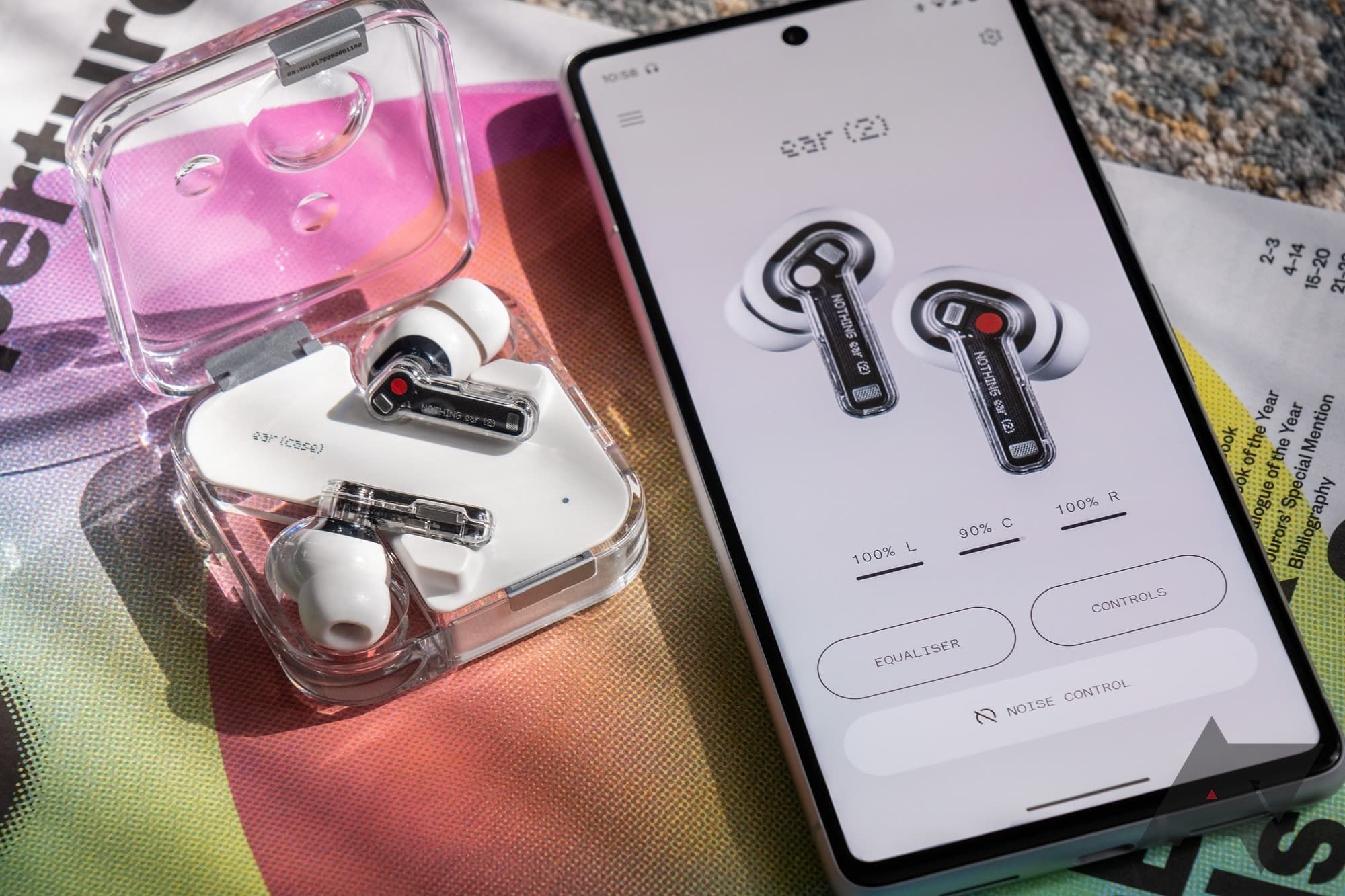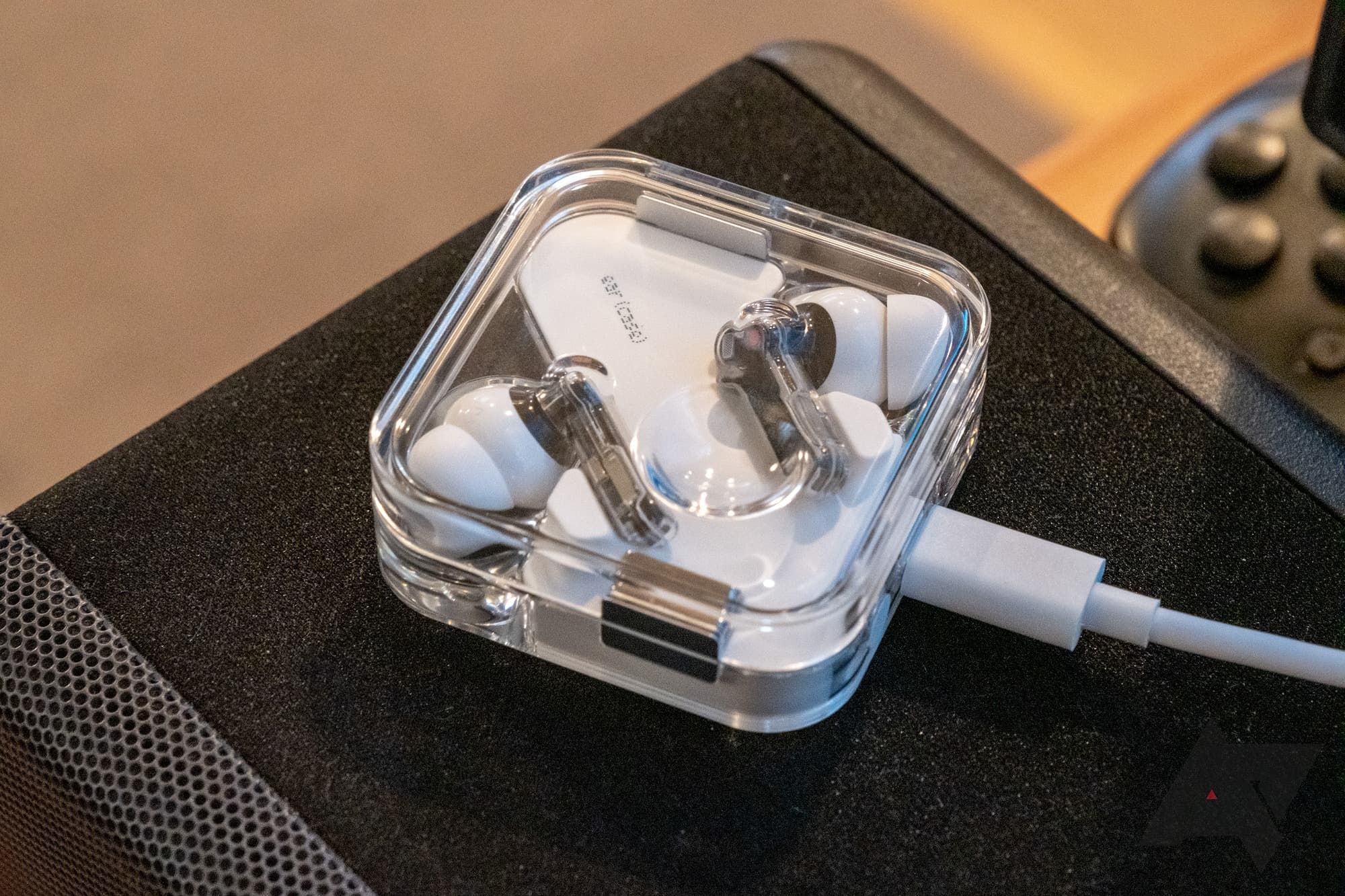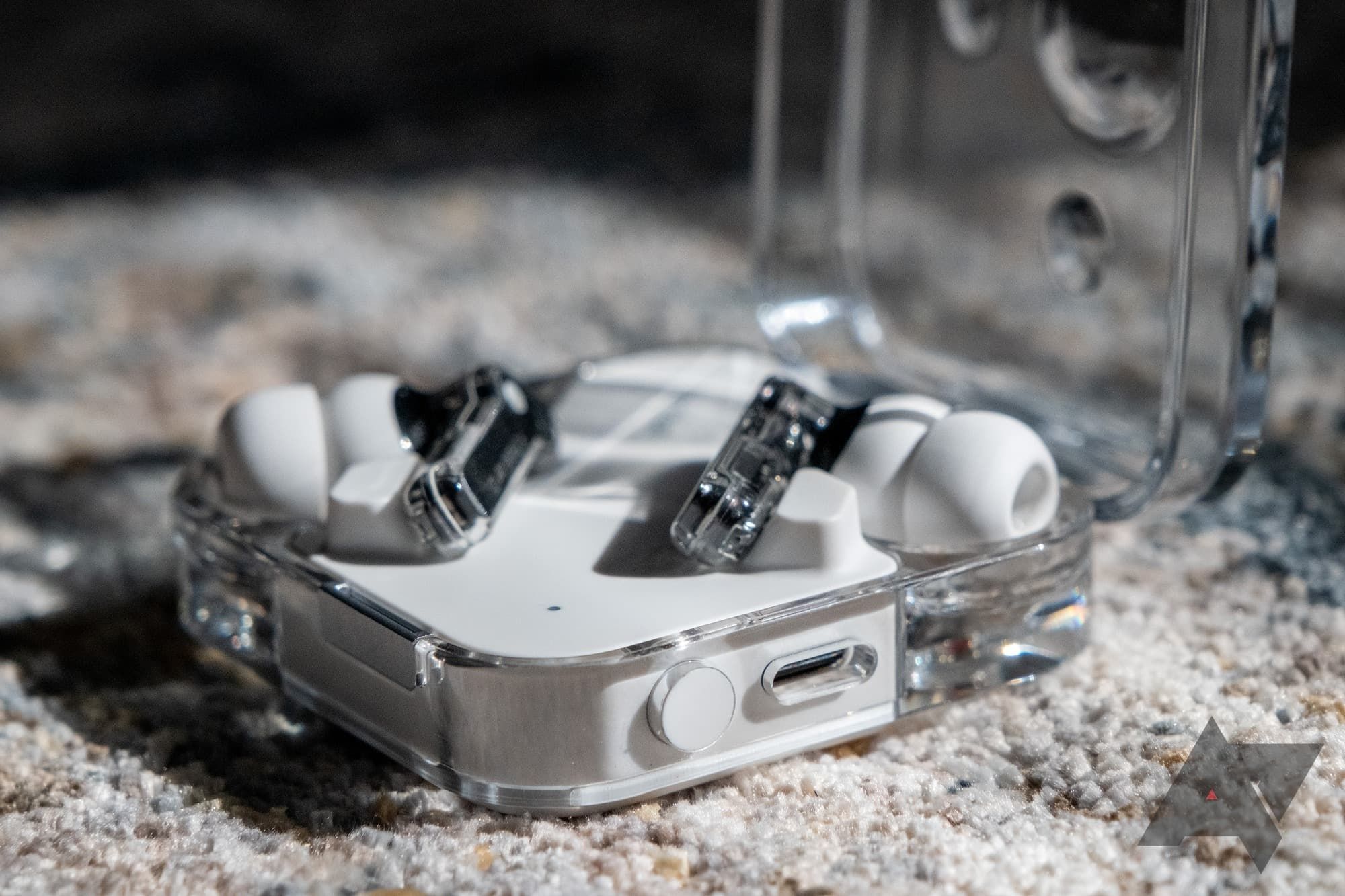Nothing's first pair of earbuds, the Ear 1, came to market in 2021 with a unique look and a very appealing $99 price tag. After a midlife price increase, though, they started to look a little dubious, with average sound and weak battery life.
The Nothing Ear 2 introduce enhancements like multipoint connectivity, new and improved controls, and significantly better overall audio quality, all for a slightly higher price ($149). These are definitely good earbuds — but the same old battery woes and some new annoyances hold the Ear 2 back from being an unqualified success.
Nothing Ear 2
Sequel to the original Nothing Ear 1, the Ear 2 introduce improvements like multipoint connectivity, pressure-sensitive stems for squeeze controls, improved water and dust resistance, and better audio quality overall. Battery life is flatly worse than most of the competition, though, and some of Nothing's software tricks miss the mark.
- Battery Life: 4 hours (ANC on); 22.5 with case
- Noise Cancellation: Yes
- Mono Listening: Either bud
- Bluetooth : 5.3
- Microphones: 3 per bud
- IP rating: IP54 (buds), IP55 (case)
- Supported codecs: AAC, SBC, LHDC 5.0
- Charging: USB-C, wireless
- Driver size: 11.6mm
- Price (MSRP): $149
- Dimensions: 29.4 x 21.5 x 23.5 mm (each bud), 55.5 x 55.5 x 22mm (case)
- Weight: 4.5g (each bud), 51.9g (case)
- Generally very good sound quality
- Competent ANC
- Nothing's design language is still very slick
- New pressure-sensitive controls are nice
- Poor battery life
- Certain sounds are unusually harsh at high volumes
- Customized EQ and ANC options are lacking
Price and availability
The Nothing Ear 2 cost $149. You can get a pair directly from Nothing or from the company's retail partners, including Amazon and StockX.
Design and hardware
The Nothing Ear 2 look nearly identical to Nothing's first earbuds, the Ear 1. Aside from a few minor tweaks — adjustments to the microphone layout, a tiny metal plate for the buds' new pressure-sensitive controls, and updated "Ear (2)" branding — the look is unchanged from the first generation. That's all good with me, as the Ear 1 were some of the best looking earbuds in 2021, and the look is still as slick today.
The part of the Ear 2 that goes in your ear is a plain white bud, but the stems that stick out are encased in clear plastic that shows off some of the earbuds' guts. The look isn't so flashy that people will stop you on the street to ask what earbuds you're wearing, but this feature makes using the buds just a little more fun.
The Nothing Ear 2's case is slightly smaller than the Ear 1's.
Nothing's also applied its trademark aesthetic to the earbuds' case. The Ear 2's case is just slightly smaller than Ear 1's in every dimension, but the general look, feel, and layout is unchanged. Like the buds, the case is also largely made of clear plastic. The case is also functionally the same as the Ear 1's, with the same battery capacity, USB-C and wireless charging, and even the same fidget-friendly dimple.
The earbuds are IP54 water and dust resistant, while the Ear 1s were only IPX4. That rating does not mean the Ear 2 are any more water-resistant — the 5 in "IP54" means the Ear 2 are rated for moderate dust resistance, while the Ear 1 weren't rated for dust resistance at all (hence the X). The Ear 2's case is actually even hardier, with an IP55 rating. Both the buds and their case can survive rain and sweat, but neither should be submerged.
The Nothing Ear 2 are small and light, and their stem-style design makes for a comfortable and relatively secure fit. They won't stay stick your ears as tightly as something like the fitness-oriented Jaybird Vista 2, but the Ear 2 never felt like they'd fall out of my ears while I was out and about — a big improvement from Nothing's one-size-fits-some Ear Stick.
The Ear 2 are powered by the same 11.6mm driver as the Ear 1, but Nothing says it's redesigned the buds' internals around that driver to give it more room, a change the company says affords the Ear 2 better audio quality.
Audio and ANC
The Nothing Ear 2 generally sound very good for midrange earbuds. The company's Ear 1 buds produced powerful bass, but mids and treble often lacked detail, which could make for muffled sound. The Ear 2 dial back the bass a touch and deliver clearer mids and brighter highs, making for a better listening experience even in bass-forward tracks. In addition, there's support for the usual AAC and SBC codecs, plus LDHC 5.0. Not a lot of phones support the high-quality LHDC codec right now, but the Nothing Phone 1 does (along with many newer OnePlus phones).
The Nothing X app has personalized audio settings, both for EQ tuning and Active Noise-Cancellation (ANC). The app offers a sort of hearing test, and according to Nothing, based on the results, fine-tunes the earbuds' sound profile in a way that compensates for your individual hearing deficiencies. When I took the test, it showed that I struggle a little with high-frequency sounds; my resulting personalized sound profile did, indeed, boost treble.
I wonder how useful these personalized tweaks are for most people, though. If you're used to hearing music one way, changing the equalizer to make it sound "normal" will sound a little off to your ears. Worse, turning on Nothing's sound personalization introduces persistent digital background noise that's very noticeable during quieter moments in media playback — it sounds like a heavily compressed recording of running water. This issue was present on multiple firmware versions, with the buds paired to multiple different devices, and across multiple streaming services. I even tried taking the hearing test again to see if I'd somehow miscalibrated the feature, but no dice.
But my biggest issue with the Nothing Ear 2's audio is that at high volumes, the earbuds can exhibit some gnarly sibilance — exaggerating the sharp hiss that comes with certain sounds. You can hear it in people pronouncing hard s, t, and th sounds, and in some especially dry snare drums and cymbals. However, I only notice the effect in certain tracks and with the volume up around 90 percent or higher. You can mitigate it by tuning the treble down in the Nothing X app's equalizer settings, but you'll have to make a custom EQ setting to fix it — sibilance is an issue at high volumes across all of Nothing's presets.
Noise-cancellation is about as good here as in most other earbuds in this price range, which means it effectively mutes consistent, low-frequency sounds and muffles higher-pitched and irregular noise fairly well. Swapping between the Ear 1 and Ear 2 in a noisy coffee shop, I couldn't hear a drastic difference in ANC quality. Neither pair can match high-end options from Sony or Bose, but I think the ANC in the Nothing Ear 2 is more than good enough for $150 earbuds. The personalized ANC mode the buds offer, informed by the same hearing test I mentioned above, didn't sound any different to me than the stock high ANC setting.
New in this generation, Nothing's added an adaptive ANC mode that aims to change the intensity of the ANC effect based on how noisy your surroundings are, ostensibly to save battery life. The only difference I noticed using this mode was that the buds seemed to occasionally miscalculate how loud my environment was and turned ANC off for a couple of seconds before flipping it back on, which makes a kind of hollow whoosh sound. More often than not, I ended up swapping between the high ANC setting and the buds' transparency mode manually.
The call quality is fine. The Nothing Ear 2 filter out background noise from loud environments as good as the Ear 1 — both do a nice job there — but my voice was a bit louder and clearer on the newer earbuds. Both outperformed the similarly priced Jabra Elite 5 in call quality; in recordings taken in the same loud environment on all three, my voice was most audible through the Nothing Ear 2.
App and features
The Nothing Ear 2 buds are managed through the Nothing X app, which is pre-installed on the Nothing Phone 1 and available through the Play Store on other Android phones and the App Store on iPhone. The app does everything you'd expect it to, offering EQ and ANC settings as well as toggles for Bluetooth multipoint, a low-latency mode, and in-ear detection. It also offers customization through the hearing test I mentioned earlier, but that's more trouble than it's worth, in my experience.
Bluetooth multipoint (or Dual Connection, as Nothing calls it) is a new addition in the Ear 2, allowing you to pair the earbuds to two audio sources simultaneously. I've used it mainly with a Google Pixel 7 and a MacBook, and it's worked how it's supposed to: the earbuds swap back and forth relatively quickly and seamlessly. The earbuds' low-latency mode seems unnecessary, as I didn't notice any audio-video lag. But I'm not a big mobile gamer, so the feature's not meant for me anyway.
You can use the Nothing X app to check the fit of your Nothing Ear 2's silicone tips (the pre-installed medium option works like a charm for me) and to customize the earbuds' squeeze controls. This type of control has been gaining traction in stem-style earbuds lately, and I really like it: rather than tapping the buds to interact with them, you squeeze the stems. One squeeze for play/pause, two to skip forward, and three to skip backward. It's harder to accidentally pause your music or skip around with controls like these, but skipping to a previous track can be awkward, generally requiring six rapid squeezes — three to start the current track over, then three more to skip to the previous one. Still, the control scheme works well, and you can change controls on each bud independently.
Battery and charging
Battery life was the Nothing Ear 1's Achilles' heel; the earbuds could only make it about four hours on a charge with ANC on. Unfortunately, that hasn't improved here. Using the Ear 2 at work, moving between music playback and video meetings with some stretches of ANC-assisted silence sprinkled in, I heard the low battery warning about three hours in. This is decidedly poor battery life for wireless earbuds in 2023; five to six hours with ANC is standard, and some pairs can make it seven or more.
The charging case offers an additional 18 or so hours of battery life with ANC on. You can charge the buds' case either over USB-C or wirelessly.
Competition
At $150, the Nothing Ear 2 are in the thick of the midrange earbud market. They're priced the same as the recent Jabra Elite 5, and are in striking distance of the $179 OnePlus Buds Pro 2. Compared to the Jabra Elite 5, the Nothing Ear 2 offer similar audio quality and ANC, and, in my experience, better background noise suppression on calls. The Elite 5 have better battery life, though, at seven hours per charge with ANC to Nothing's four.
Up against the slightly more expensive OnePlus Buds Pro 2, the Nothing Ear 2 sound better in my opinion, with clearer and more spacious mids and highs. The OnePlus buds offer better battery life at six hours, though, and moderately better IP55 water and dust resistance (the Nothing earbuds are rated at IP54).
Should you buy them?
The Nothing Ear 2 offer above-average audio quality and an eye-catching aesthetic at a midrange price of $149. Battery life is a miss at four hours per charge with ANC, though, and Nothing's customizable EQ and ANC modes don't add much (if any) value.
But if you're shopping for earbuds around this price and Nothing's design language pushes your buttons, there's plenty to like here. Even with their sibilance problems, the Ear 2 sound considerably better than the Ear 1 most of the time, and ANC and call quality are at least as good as they need to be for the price. If you like your earbuds stylish and you don't need them to last you through long-haul flights, the Nothing Ear 2 are a solid pick.

